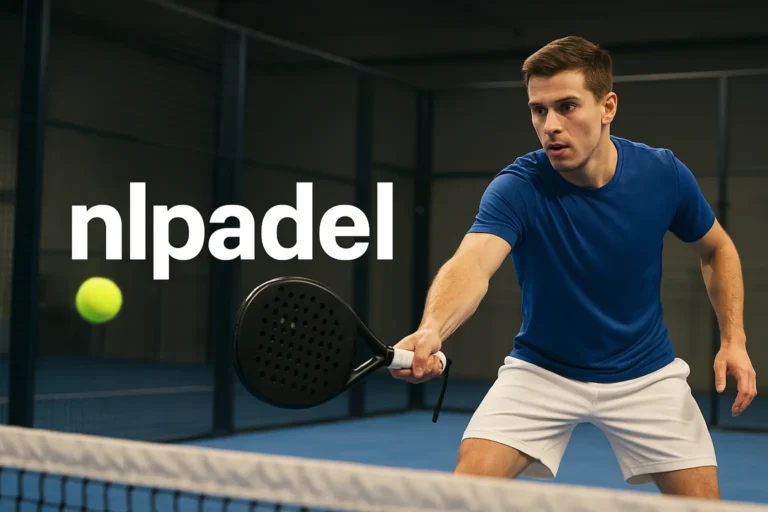If you’re getting into padel or planning to visit courts across Dutch cities, nlpadel is the term that ties together federation information, booking platforms, and club communities. This guide explains what nlpadel means in practice, where to play, what equipment to pick, and practical steps to get started — all in a human, easy-to-read style that helps you take immediate action.
What is nlpadel?
nlpadel is best understood as the umbrella of padel activity in the Netherlands: it includes official federation notices, community resources, and the local vocabulary used by clubs and players. For many people, mentions of nlpadel point to where rules, rankings, and competition calendars are published, but it also appears when players search for venues, lessons, and local events. Knowing this helps you separate official guidance from club-level announcements or commercial promotions.
Where to play nlpadel: finding courts and clubs
Finding the right court starts with the kind of experience you want. Indoor clubs offer year-round play and court surfaces that keep ball bounce consistent; outdoor venues may be cheaper and ideal during longer daylight hours. Look for clubs that advertise coaching programs and trial sessions if you’re new — a beginner-friendly club will have group lessons and loaner rackets. Many urban areas have multiple venues, so compare opening hours, court quality, and community reviews before booking. Booking systems vary: some clubs use centralized apps, while others take reservations by phone or a simple website form. If you prioritize convenience, choose a place with easy online booking and clear cancellation policies.
Equipment for nlpadel players: what to buy first
Starting with the right gear makes learning faster and more enjoyable. A comfortable racket with a balanced weight and a medium-size sweet spot suits most beginners. Shoes designed for court sports will protect your ankles and give the grip you need for quick lateral movements. Clothing should be breathable and non-restrictive. As you progress, consider investing in a slightly stiffer racket for more control or a lighter one for faster swings, depending on your style. Also carry a small kit with an extra grip, a wristband, and a water bottle — these simple items improve comfort during sessions.
Getting started with nlpadel: lessons, practice, and etiquette
Begin with at least a few group lessons to learn the fundamental strokes, positioning, and teamwork that padel requires. Practice drills that focus on service returns, volley control, and coordinated movement with a partner. On-court etiquette matters: call the score clearly, help retrieve stray balls when appropriate, and respect allocated court times. Warm up properly and cooldown after intense rallies to prevent injury. Regular short practice sessions beat irregular long ones — consistency is more effective than sporadic intensives.
Competitions, clubs, and the local community
If you enjoy social play or want competitive exposure, local leagues and weekend tournaments are common entry points. Many clubs run ladder systems or beginner-friendly tournaments that prioritize fair play and inclusion. Joining a club is also the fastest way to meet regular partners and to learn from more experienced players. Volunteer opportunities — organizing events or assisting with junior programs — deepen community ties and can lead to discounted court time or coaching benefits.
Training and improvement: simple drills that work
Focus on drills that replicate match scenarios rather than isolated strokes. Practice serve-and-volley sequences, partner-driven crosscourt rallies, and short, explosive footwork exercises. Videoing practice sessions for short self-review can reveal recurring technical habits to correct. A mix of solo technical work (shadow swings, control drills) and partner drills (placement, transition to the net) builds all-round skill. Fitness matters: short sprints, agility ladders, and core stability exercises will noticeably improve movement and reduce fatigue during long matches.
Safety, maintenance, and court care
Respect court surfaces by using appropriate footwear and by avoiding dirty or wet soles on indoor courts. Report any hazards or torn nets to club staff immediately. Take care of your racket and grips; replacing a worn grip improves control and limits strain on the arm. If a court is wet or damaged, reschedule rather than risk injury. Responsible players contribute to longer-lasting facilities and a better experience for everyone.
Conclusion
This guide gives a clear, practical picture of nlpadel for newcomers and regular players alike. From understanding what the term covers to choosing gear, finding the right club, and improving match play, the essentials here are aimed at helping you enjoy padel with confidence. With consistent practice, good equipment choices, and respectful court habits, progress follows naturally — and the local community makes the journey rewarding.
Frequently Asked Questions
How do I find beginner-friendly padel lessons?
Check club announcements and ask for trial group sessions; many places advertise beginner blocks and offer equipment for first-timers.
What’s the best racket for a new player?
Start with a medium-weight racket that balances power and control; adjust later as your technique and preferences develop.
Are indoor courts better than outdoor courts?
Indoor courts provide a stable environment year-round, while outdoor courts can be pleasant and cheaper — choose based on weather, budget, and play consistency.
How often should I practice to improve?
Aim for short, regular sessions (2–3 times per week) rather than infrequent long sessions; consistency builds skills faster.
What’s basic court etiquette I should follow?
Be punctual, call scores clearly, respect court time limits, and help keep the facility tidy for the next players.

